Rainy weather is often a deterrent for hunters. Staying home, warm and dry, is often a missed opportunity to get in on some very underrated deer hunting opportunities.
Is it worth hunting during rainy weather, and do deer move in the rain?
Short answer: Yes. Long answer: Yes
In this article, we will look at:
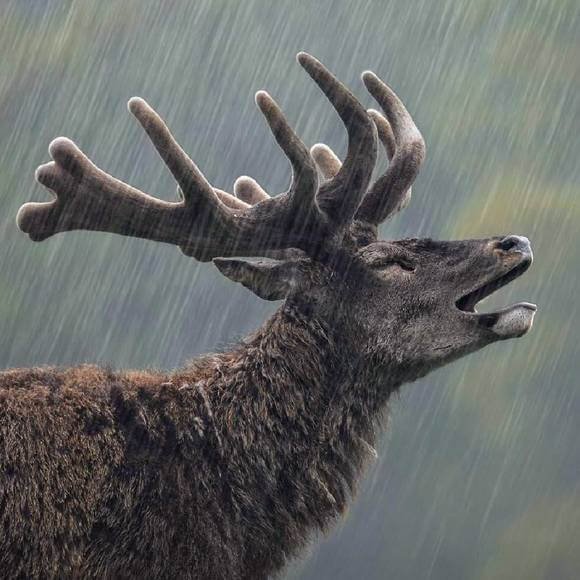
via Reddit
How Do Deer Move In The Rain:
The way that deer behave during rainy or varying weather depends heavily on the severity of the weather. It can explain, “why do deer move in the rain?”
Light rain
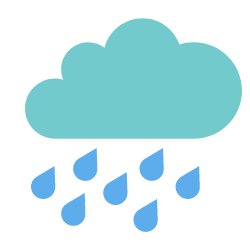
During light rain, drizzle, and low winds, deer tend to continue with their business, as usual, especially bucks.
Deer deals with ever-changing weather throughout a year, so wherever possible (or safe to do so), they will continue to fulfill the routines they require to keep themselves alive.
Heavy Rain
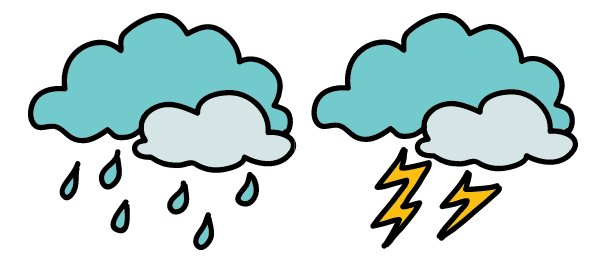
Through stormy periods with heavy rain, high wind, and/or thunder, deer most commonly hunker down.
Severe weather creates a large amount of noise which is unsettling for deer as their senses, ability to hear, and notice movement are hindered.
Therefore they prefer to hide in overgrowth, brush, and trees until it is over.
Throughout this time, they may forego feeding and drinking times in favor of safety.
Given a break in the weather, they will often use that window to relocate to a more comfortable area or catch up on feeding and their other needs, regardless of the time of day.
Is It Worth Deer Hunting In The Rain?
Yes, hunting deer in the rain offers a unique set of circumstances that works in the hunter’s favor.
If you can push through some of the basic discomforts of being out in the weather, a good opportunity presents itself.
Blind Senses
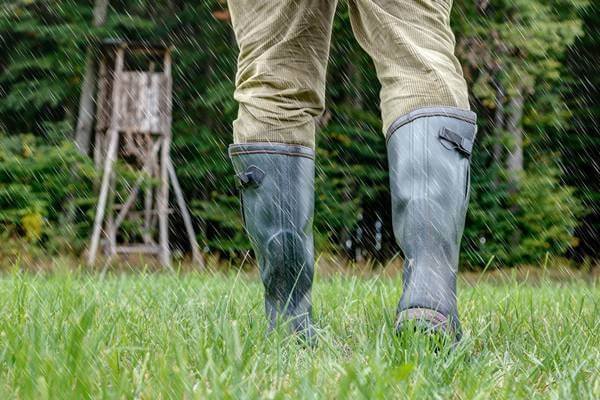
One of the main challenges of hunting deer is incorporating yourself seamlessly into the landscape.
Deer have a keen eye, nose, and ear for changes in the environment and energy that feels a little “off.”
Rain, wind, fog, and mist all hinder the deer's senses in different ways.
Rain and wind mask any small sounds you make, including the basic walking and crunching of sneaking into your spot.
Fog and mist may hinder their overall vision, while the movement of trees, branches, and leaves from the wind mean that your movements are less perceived.
Feeling like you have the slip-on of any animals in the area is a very nice feeling.
During rainy periods scent over distance is suppressed to a degree. Rain will wash away and mask existing odors as well as the scent molecules ability to travel.
However, in close and wet areas where there is no longer rain, scent can also pool, similar to an elk wallow.
Less Competition
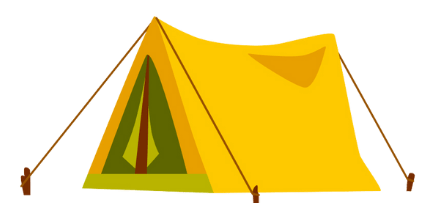
Aside from the benefits of a deer’s affected senses, you have the additional (and considerable) benefit of less hunting pressure and competition in the field.
Most casual or fair-weather hunters or campers will stay at home during less-than-ideal conditions.
It means you have a much better chance of getting in on the action on deer that should be less skittish.
Hunting Deer In The Rain Strategy:
As with standard hunting practices, it is best to work areas like edge habitat, game trails, or feed areas.
Beyond setup locations, the hunt’s timing makes the difference when hunting during rainy days.
Check Weather Forecast
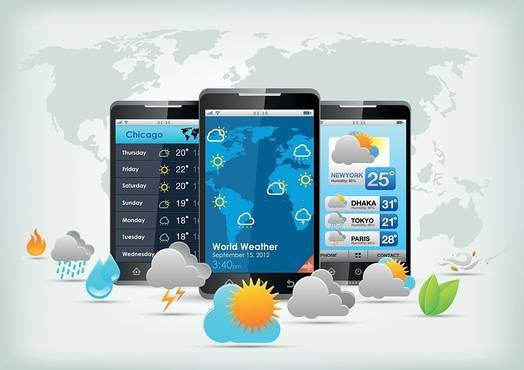
Keeping an eye on the radar and up-to-date forecast will help you pick when to get into your hunting spot and how long to stay.
Deer has a keen sense of the weather and will often start moving or taking advantage of opportunities to feed just before the harsh weather comes in.
It can happen not just for periods of rain; but for snow, cold snaps, or wind storms.
If you are willing to get out there ahead of this time, you’ll give yourself additional opportunities for hunting success.
When is the best time?

Via pressherald.com
The best time for deer activity is just after a long period of harsh weather where they have been forced to bed down for hours, breaking up their usual daily routines and activities.
Sneaking in under cover of rain and wind will allow you to get into a good position to wait for the weather to clear and for the deer to start moving.
This window can offer a middle-of-the-day buzz similar to that of the twilight hours, offering an additional chance to get in on some real action.
Wet Weather Considerations and Tips:
Tracking
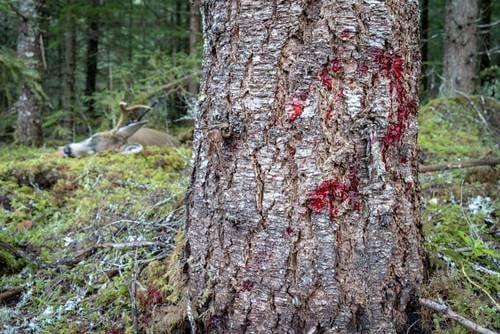
Tracking can be difficult at the best of times. When the rain washes away the blood trail, it gets even harder.
You can be excused for thinking it is best to follow up as quickly as possible to get to any blood evidence that remains; however, this is a risky practice…
Chasing a deer prematurely can risk bumping it further and into unpredictable areas.
In most scenarios from the location of the shot, if left alone, a deer will run up to a couple of hundred yards in one direction before finding some brush to lay in to die.
It is best to give them time, let them lay down, and look for the deer afterward, even if the trail to follow is washed away.
Shot Placement
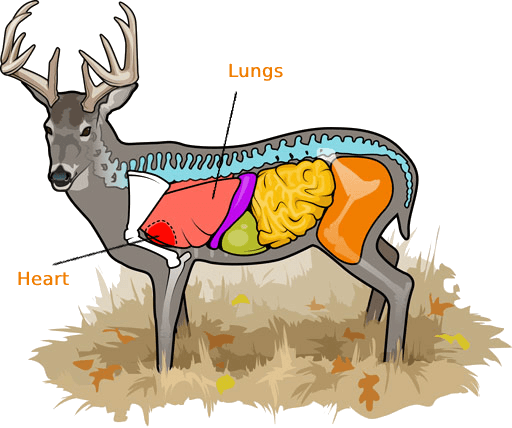
Via realtree.com
As mentioned above, because there are challenges when it comes to following the blood trail of a deer, shot placement is critical.
Increasing your likelihood of a quick, ethical, effective kill is key to ensuring you do not lose a deer to the rain.
It is preferred to shoot a broadside facing deer, behind the front shoulder, in the zone where the heart and lungs are located.
A wounded or far-running deer in the wet is often a lost deer.
Gears

One of the biggest barriers to getting out there and hunting in rainy weather is the discomfort of being cold, wet, and miserable.
Having decent hunting rain gear will go a long way to making it a better experience and allow you to focus more on the hunt itself.
Usually, it is okay for your outer layer to get wet, but it is when that dampness seeps into the body that challenges and discomforts occur.
A pair of water-repellent boots (properly maintained) and a weatherproof jacket and pants should help to keep you in the field longer.
Cover

Wet weather hunting is best done when you have the additional tools or infrastructure to keep yourself dry. That said, it is still definitely possible to do without.
It is worth investing in some form of roofing or cover for those hunting from ground blinds or tree stands.
Depending on the location, the tree stand may have a strong enough canopy to minimize exposure to rainfall. However, special hunting umbrellas are now also available.
A ground blind that is either fully enclosed or uses a camouflage tarp will make those long sits more bearable.
For the hunter that hunts on the move, besides having good quality apparel, finding temporary shelters mid-hunt when the rain gets heavier is key.
Practice in All Types of Weather:

It is important as a hunter to be familiar with various scenarios you may encounter in the woods: from shot angles and distances to varying conditions.
The old saying “practice makes perfect” applies to hunting, and especially bowhunting.
The more we can improve our accuracy across all situations gives us the best chance of effectively retrieving a deer.
It is worth shooting arrows in the backyard when wet outside, wearing your bulky weather-resistant fall/winter clothing.
This way, you can see how your form is affected by the clothing:
Learning the Hard Way:
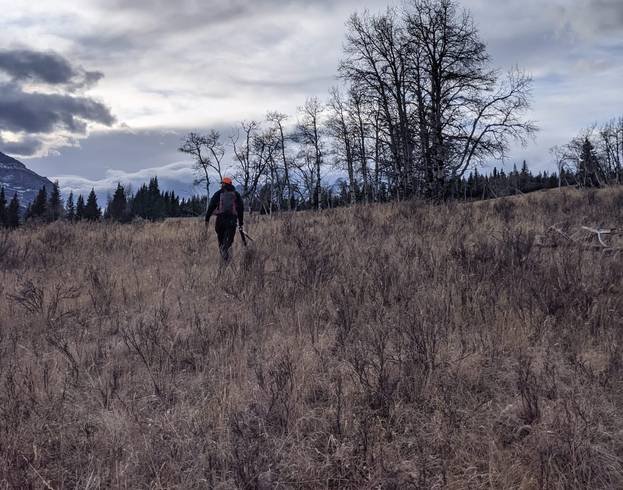
On the third day of a whitetail hunt in the foothills of Alberta, rain clouds unexpectedly rolled down through the valley.
I was approximately four miles away from my vehicle, so I decided to find a well-treed and covered area to wait out the rain. It continued to pour for a few hours, up until around 2 pm.
I used the break in the weather to venture back to the car, hiking down an open trail with fields on the left and a timbered dip in the terrain on the right.
Standing on the side of the trail beside the trees, about 25 yards away... A big whitetail buck, staring at me.
I scrambled to pull my rifle off my shoulder, and the buck took off. A missed chance…
The rest of the walk back, I came across more deer, mostly does, and a running spike as many deer in that hour as I’d seen on the whole trip so far.
If I’d known that deer want to move and feed after hours of being held down by the rain, my hunt could have ended up very different.
Summary:
Hunting is all about doing your best to stack the odds in your favor. The hunter that hikes deeper and hunts longer has a better chance to tag a buck.
Being the hunter that weathers the conditions allows you to be in a special position where the deer are moving, and the hunting pressure is low.
If you want to feel like you have an area to yourself, deer hunting in the rain, utilizing breaks in the weather is a great way to get your slice of the action while everyone else is still at home.
Who knows, it could get the best buck of your life.
Have you hunted in the rain? Have you got any queries for "do deer move in the rain?" ? Will you reconsider wet weather hunting? Feel free to comment below!
